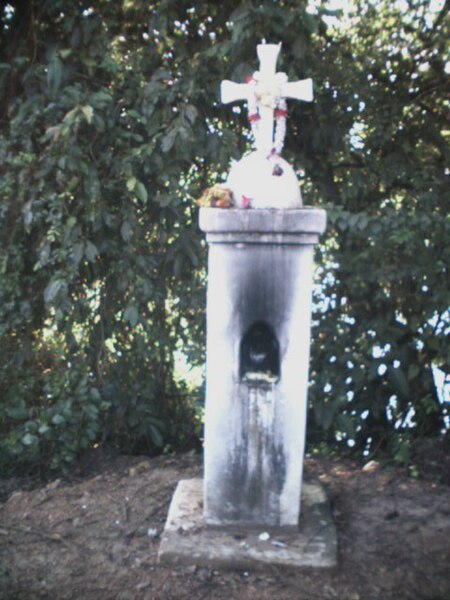The indigenous population of the erstwhile Portuguese colony of Goa, Daman and Diu underwent Christianisation following the Portuguese conquest of Goa in 1510, which was followed by the Goa Inquisition from 1560 onwards. The converts in the Velhas Conquistas to Roman Catholicism were then granted full Portuguese citizenship. Almost all present-day Goan Catholics are descendants of these native converts; they constitute the largest Indian Christian community of Goa state and account for 25 percent of the population.
Chapel of Santa Catarina, built in Old Goa during Portuguese rule. It should not be confused with the Cathedral of Santa Catarina, also in Old Goa.
Christian maidens of Goa meeting a Portuguese nobleman seeking a wife, from the Códice Casanatense (c. 1540)
A view of the Se Cathedral
A typical white Sant Khuris (Holy Cross), of a Goan Catholic family, constructed in the style of Portuguese architecture
Goan Catholics are an ethno-religious community of Indian Christians adhering to the Latin Rite of the Catholic Church from the Goa state, in the southern part of the Konkan region along the west coast of India. They are Konkani people and speak the Konkani language.
Christian maidens of Goa meeting a Portuguese nobleman seeking a wife, from the Códice Casanatense (c. 1540)
The Sé Cathedral dedicated to St. Catherine of Alexandria, in Old Goa, was built by the Portuguese in 1510. It is one of the oldest churches in Goa and one of the largest in Asia. It also holds a miraculous cross that is venerated to date.
Distribution of Goan Catholics in India
A traditional Portuguese-influenced villa of a Goan Catholic family







